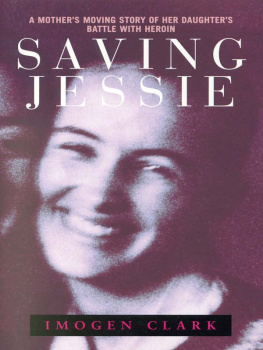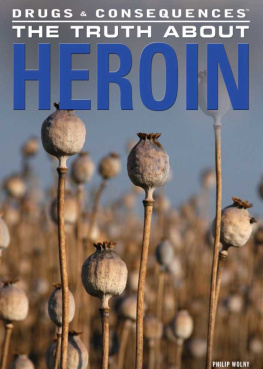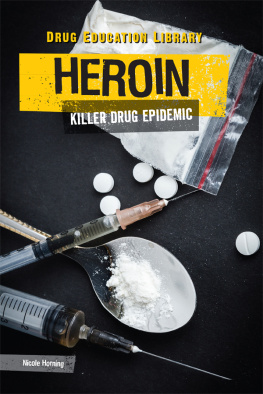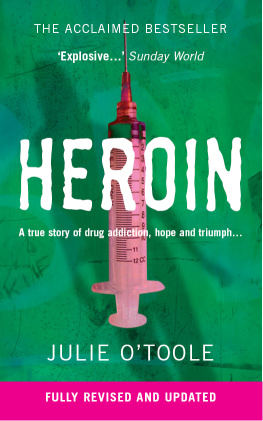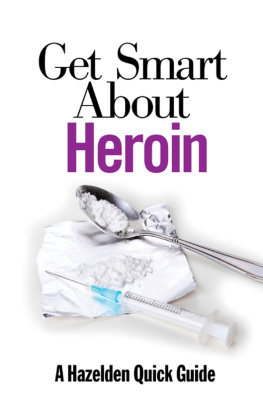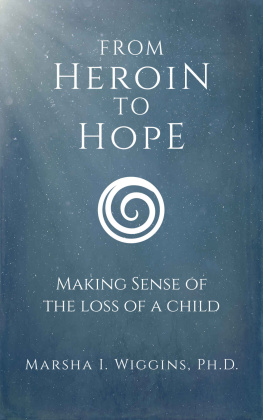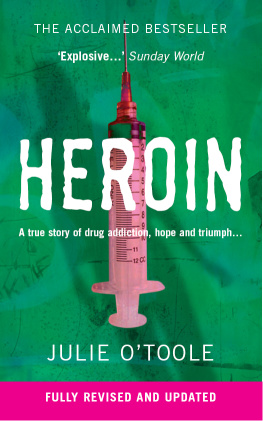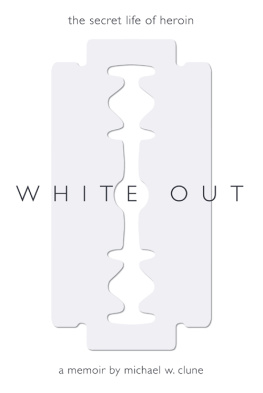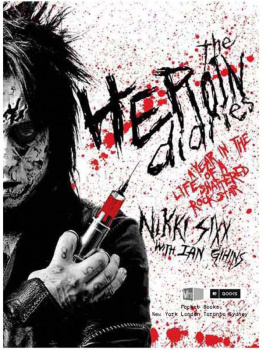Heroin
THE LIBRARY OF ADDICTIVE DRUGS
Heroin
ITS HISTORY, PHARMACOLOGY, AND TREATMENT
SECOND EDITION
REVISED AND UPDATED
Humberto Fernandez
and
Therissa A. Libby, Ph.D.

Hazelden Publishing
Center City, Minnesota 55012
800-328-9000
hazelden.org/bookstore
1998, 2011 by Humberto Fernandez
All rights reserved. Published 2011
First edition published 1998. Second edition 2011
Printed in the United States of America
No part of this publication may be reproduced without the express written permission of the publisher. Failure to comply with these terms may expose you to legal action and damages for copyright infringement.
Library of Congress Cataloging-in-Publication Data
Fernandez, Humberto, 1950
Heroin: its history, pharmacology, and treatment / Humberto Fernandez and Therissa A. Libby.2nd ed., rev. and updated.
p. cm.(The library of addictive drugs)
Includes bibliographical references.
ISBN 978-1-59285-830-9 (softcover)
ISBN 978-1-59285-990-0 (ebook)
1. HeroinHistory. 2. Heroin abuse. 3. Heroin abuseTreatment. 4. Methadone maintenance. I. Libby, Therissa A., 1960- II. Title.
HV5822.H4F47 2011
362.2973dc22
2010039231
Editors note
All the stories in this book are based on actual experiences. The names and details have been changed to protect the privacy of the people involved.
This publication is not intended as a substitute for the advice of health care professionals.
Alcoholics Anonymous, AA, and the Big Book are registered trademarks of Alcoholics Anonymous World Services, Inc.
13 12 11 1 2 3 4 5 6
Cover design by Theresa Gedig
Interior design and typesetting by Madeline Berglund
For James, Carlos, Vanessa, and Julian
CONTENTS
by David E. Smith, M.D., Founder, President, and Medical Director, Haight Ashbury Free Clinics, Inc., and Richard B. Seymour, M.A., Managing Editor, Journal of Psychoactive Drugs and International Addictions Infoline
FOREWORD TO THE 1998 EDITION

The Drug That Never Went Away
Celebrity drug overdose deaths involving heroin, such as the death of comedian Chris Farley from a heart attack induced by using a speedball (cocaine and heroin), have raised the visibility of heroin as though the current wave of addiction were something new. Actually, heroin addiction never went away. Until recently, however, its been eclipsed in the media by the phenomena of runaway crack cocaine and methamphetamine abuse. In reality, even though America has experienced a period of intensified stimulant abuse, unfortunately with methamphetamine abuse still rising and yet to reach its peak, the need for treatment of heroin addiction has continued to be a prominent feature of the American drug scene. Every stimulant abuser is a potential heroin addict, because of the well-known upper-downer cycle, a drug pattern observed at the Haight Ashbury Free Clinics every decade for the past four decades. Viewed from a statistical, public health standpoint, the focus on specific drugs of abuse is a matter of degree, not totality.
An increase in heroin abuse has been expected and can be seen as one phase of an ongoing oscillation between stimulant and depressant drugs that has been identified and followed over the past thirty years by Dr. John Newmeyer, of the Haight Ashbury Free Clinics, and other epidemiologists working in the addiction field. Just as individuals may become entangled in an upper-downer cycle, our drug-using society has experienced approximately ten-year cycles of predominant upper or downer abuse throughout the century. This is how it works. Following each stimulant epidemic, whether it involves amphetamine or cocaine, significant numbers of addicts turn to heroin to calm the side effects of long-term stimulant abuse, such as anxiety, insomnia, or paranoia. Heroin, or diacetylmorphine, works through the opioid receptors in the brain and initially provides relief from these side effects, along with euphoria and relaxation. In its turn, however, heroin can rapidly produce physical dependence with severe withdrawal when the user tries to stop using.
Even though the current rise in heroin use was predictable, this rise, like its predecessor in the late 1960s, has its idiosyncratically alarming aspects, primarily due to the appearance of heroin abuse in new populations, particularly in younger populations with no previous history of narcotic abuse or addiction.
The highly publicized death from a heroin overdose of a nineteen-year-old rock musician in San Francisco in the fall of 1997 brought the growing problem of heroin addiction among youth to general public attention. Behind the headlines, those of us in the drug treatment field have become increasingly aware of dramatically expanded heroin use by young people.
One aspect of the rise in heroin use among young people is the appearance of heroin chic. For some inexplicable reason, perhaps even a growing use of the drug by individuals within the fashion and entertainment industries, heroin use has come to be glamorized in films and in ads appearing in fashion magazines. Heroin abuse has become fashionable.
Tolerance (needing more and more of the drug to achieve the desired effect) builds rapidly to heroin, so that while the addict is actively using, he or she may progress to a dose that would be potentially lethal to a person who has not developed tolerance. It should be noted that tolerance decreases rapidly when a heroin user enters treatment and engages in abstinence and recovery. Fatal overdoses may occur when recovering heroin addicts slip and inject a dose comparable to the amount of the drug they were taking at the height of their active use. In addition, the purity of heroin varies greatly in the drug culture. Variations in tolerance to and purity of the drug contribute to the potentially fatal overdose.
Heroin overdoses need not be fatal. The toxic effects of heroin can be reversed with a short-acting opioid receptor antagonist known as Narcan. The antagonist literally kicks the heroin molecules out of their binding sites in the brain. Naltrexone, a longer-acting opioid receptor antagonist, is used for relapse prevention by recovering heroin addicts.
Longer-term treatment of heroin addiction ranges from drug-free recovery through Narcotics Anonymous (NA) to methadone maintenance. Although there are a variety of treatment approaches for heroin addiction, the best is not to start using in the first place. As one young heroin addict said a number of years ago, Its so good, dont even try it once.
We have also seen a rise in young people experimenting with heroin by smoking it, with the mistaken belief that you cant be an addict unless you stick a needle in your arm. Unfortunately, once they acquire a taste for heroin, the needle, disability, and death may soon follow.
In Heroin, Humberto Fernandez has provided a detailed historical background to the present situation, showing the why of heroin chic. If ever a comprehensive book on heroin were needed, it is now, and Fernandez has filled that need by providing a fully developed history, psychology, physiology, and pharmacology of heroin addiction. Moving on from those basics,


